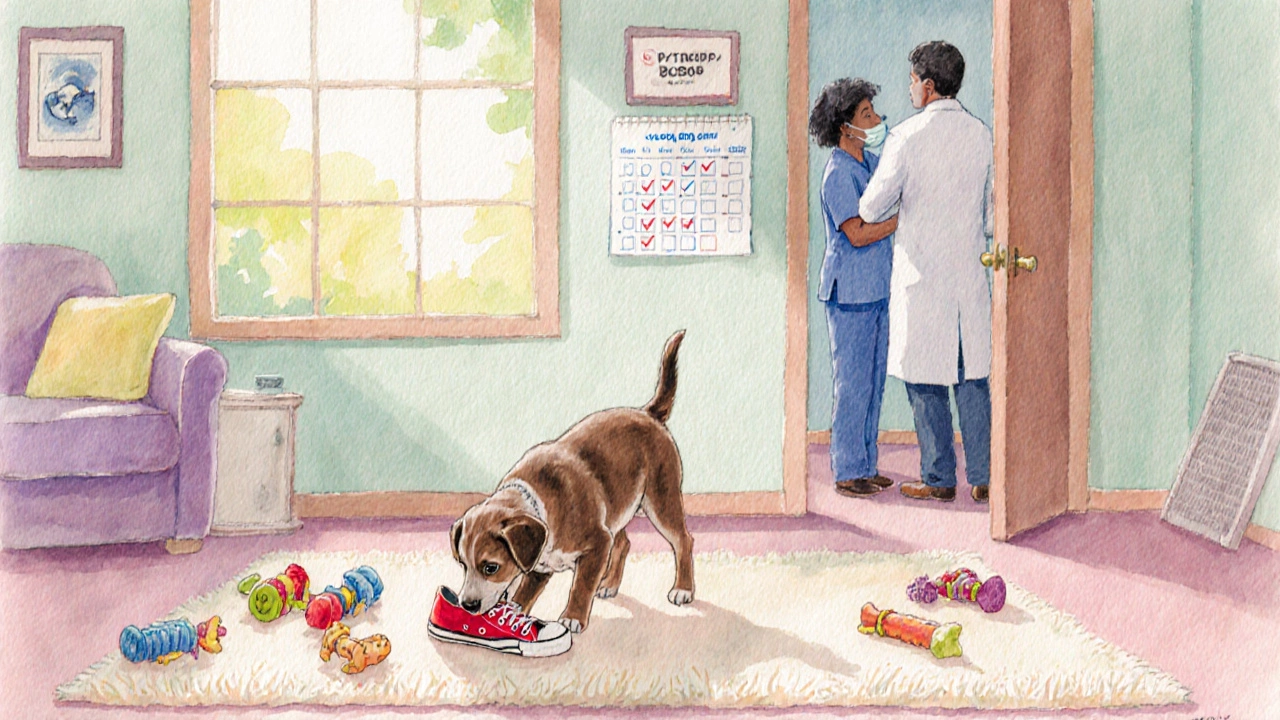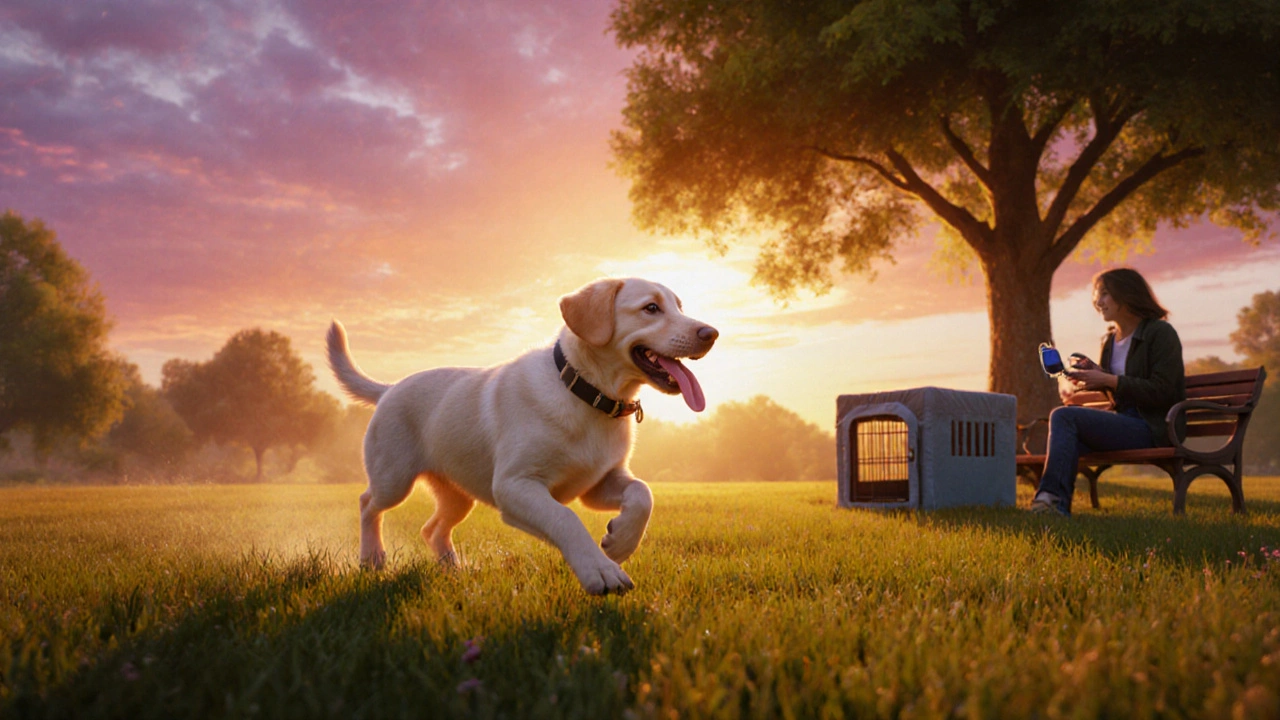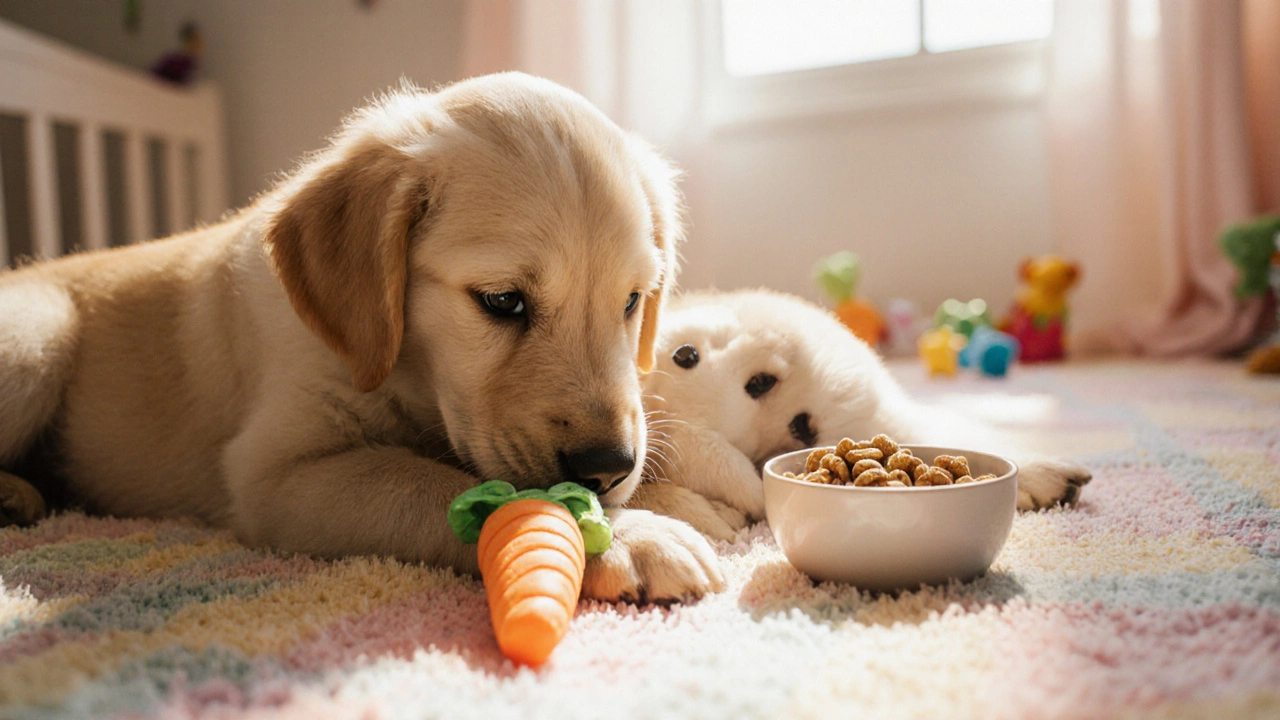Puppy Development Stage Calculator
Find Your Puppy's Developmental Stage
Enter your puppy's age in weeks to see key milestones and challenges for this period.
Key Challenges
Recommended Actions
Ever wonder when a puppy’s life feels the toughest? Most new owners hit a rough patch when their furball is just a few weeks old, but the exact age varies by breed and environment. This guide breaks down every critical period, shows why certain weeks can feel like a marathon, and gives you clear actions to smooth the ride.
Key Takeaways
- The 8‑12 week window is statistically the most challenging due to weaning, teething, and the start of socialization.
- 4‑6 months brings adolescent hormones and separation anxiety, creating a second tough phase.
- Understanding each developmental stage lets you plan training, nutrition, and health checks ahead of time.
- A simple checklist can keep you on track and prevent common setbacks.
- Tailor expectations to your puppy’s breed and individual temperament for best results.
Puppy is a young domestic dog, typically under one year old, that goes through rapid physical and behavioral changes. Owners often ask, “When will my puppy be the hardest to manage?” The answer lies in the overlapping developmental milestones that occur from birth to adolescence.
Understanding the Core Developmental Stages
Each stage creates its own set of hurdles. Below are the main periods you’ll encounter.
Weaning period is the phase, usually between 3 and 8 weeks, when a puppy transitions from mother’s milk to solid food. During this time, the gut microbiome stabilizes, and the puppy learns to chew independently.
Socialization window is the critical 8‑12 week window when puppies are most receptive to new people, animals, sounds, and environments. Positive experiences here shape confidence for life.
Teething stage begins around 4 weeks and peaks at 6‑8 months. Puppies lose their milk teeth and grow adult teeth, causing sore gums and a strong urge to chew everything.
Adolescence starts roughly at 4 months and can last to a year. Hormones surge, leading to testing of limits, increased energy, and occasional “teenage rebellion.”
Vaccination schedule outlines the mandatory immunizations from 6 weeks to 16 weeks, protecting against parvovirus, distemper, and other threats. Missed shots can cause health setbacks that add stress to both puppy and owner.
Housebreaking is the process of teaching a puppy to eliminate outdoors or on a designated pad. Consistency is key; missteps often happen during the 8‑16 week phase when the bladder control is still developing.
Separation anxiety frequently appears between 3 and 6 months, especially in breeds that form strong bonds quickly. Symptoms include whining, destructive chewing, and attempts to escape crates.
Why 8‑12 Weeks Is Generally the Toughest
Data from several veterinary clinics in NewZealand and the UK show that owners report the highest stress levels during the 8‑12 week window. Three overlapping factors push the difficulty rating up:
- Weaning meets socialization: The puppy is still learning to eat solid food while being exposed to new sights and sounds. A shaky stomach paired with a nervous mind makes accidents and clinginess common.
- First set of vaccinations: The immune system is being primed, which can cause mild fever, lethargy, or loss of appetite-adding to the caregiver’s workload.
- Teething onset: Gums are sore, so puppies chew aggressively. If you haven’t puppy‑proofed the house, you’ll find shredded shoes and chewed furniture.
Combine these with the need for housebreaking and basic obedience commands, and you’ve got a perfect storm of sleepless nights and constant monitoring.

Second Hard Phase: 4‑6 Months (Adolescence)
After the early weeks, many owners breathe a sigh of relief, only to face a new set of challenges when the puppy hits puberty.
- Energy spikes: A 5‑month‑old Labrador can sprint for 30 minutes, then demand a nap.
- Testing boundaries: “No” might be ignored if the puppy thinks it’s a game.
- Separation anxiety peaks: The pup now understands that the owner will leave, triggering distress.
Training at this stage requires consistency, higher rewards, and sometimes a professional trainer to redirect the teenage attitude.
Difficulty Comparison Table
| Age Range | Key Milestones | Typical Challenges | Difficulty Rating (1‑5) |
|---|---|---|---|
| 0‑3 weeks | Neonatal, nursing | Very fragile, no control | 2 |
| 3‑8 weeks | Weaning, early teething | Food transitions, chewing | 3 |
| 8‑12 weeks | Socialization window, first vaccinations, peak teething | Housebreaking, anxiety, destructive chewing | 5 |
| 12‑16 weeks | Basic obedience, continued housebreaking | Inconsistent training response | 4 |
| 4‑6 months | Adolescence, separation anxiety | Testing limits, energy spikes | 4 |
| 6‑12 months | Physical maturity, refined skills | Residual stubbornness, increased size | 3 |
Practical Checklist for the Tough Weeks
- Prepare chew‑safe toys before the 8‑week mark (e.g., frozen carrots, Nylabone).
- Set up a dedicated potty area outdoors; keep it consistent.
- Schedule a vet visit for the first round of vaccines; note any post‑vax lethargy.
- Enroll in a puppy socialization class or arrange safe playdates with vaccinated dogs.
- Create a quiet, crate‑friendly zone for nap time and stress relief.
- Log feeding times, stool consistency, and any signs of illness to share with the vet.

Common Mistakes and How to Fix Them
Mistake 1: Letting the puppy chew anything they can reach.
Fix: Puppy‑proof rooms by removing cords, shoes, and small objects. Offer designated chew items and reward the puppy for using them.
Mistake 2: Inconsistent potty schedule.
Fix: Take the puppy out every 2‑3 hours, especially after meals, play, and naps. Use a cue word like “outside” and praise immediately.
Mistake 3: Overlooking vaccination timing.
Fix: Keep a vaccination calendar. If a shot is missed, consult your vet about catch‑up protocols to avoid gaps in immunity.
When to Seek Professional Help
If you notice any of the following, a trainer or vet should be consulted:
- Persistent aggression toward people or other dogs after the socialization window.
- Frequent accidents despite a strict housebreaking routine.
- Excessive chewing that damages property or causes injury.
- Severe anxiety behaviors like self‑mutilation or constant whining.
Future Outlook: From Puppy to Adult
Understanding the hardest ages equips you to guide your dog through smoother transitions. By the time your pup hits 12 months, most of the early challenges have faded, leaving a well‑adjusted companion ready for advanced training, agility, or simply lazy couch time.
Frequently Asked Questions
What age does a puppy start weaning?
Weaning typically begins around 3 weeks and is mostly finished by 8 weeks. During this period, puppies shift from mother’s milk to soft kibble or wet food.
Why is the 8‑12 week period called the socialization window?
During these weeks a puppy’s brain is most receptive to new stimuli. Positive exposure to people, other dogs, sounds, and surfaces builds confidence and reduces fear later in life.
How can I stop my puppy from chewing everything?
Provide a variety of chew toys, rotate them regularly, and reward the puppy for choosing the right item. Puppy‑proof the house and use bitter sprays on forbidden objects if needed.
When should I start housebreaking?
Start as soon as the puppy can hold its bladder-usually around 8 weeks. Consistency, a set schedule, and positive reinforcement are key.
Is separation anxiety normal at 3 months?
Yes, it often appears between 3 and 6 months. Gradual desensitization-short, frequent departures and arrivals-helps the puppy learn that you’ll return.
Should I enroll my puppy in training before the socialization window ends?
Absolutely. Early obedience classes double as socialization sessions, reinforcing basic commands while exposing the puppy to new sights and sounds.
How many vaccinations does a puppy need in the first 16 weeks?
Core vaccines usually include three boosters for parvovirus, distemper, and adenovirus, given at 6‑8 weeks, 10‑12 weeks, and 14‑16 weeks. Some vets add a kennel cough shot around week 12.
